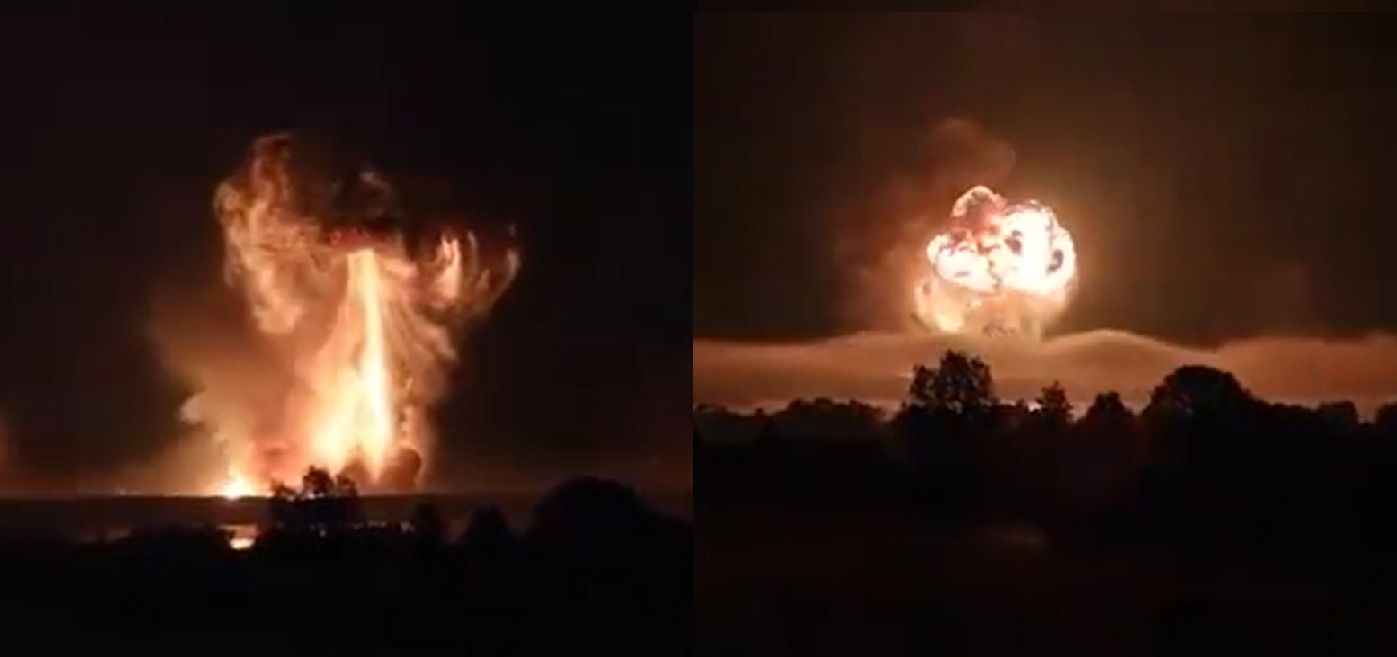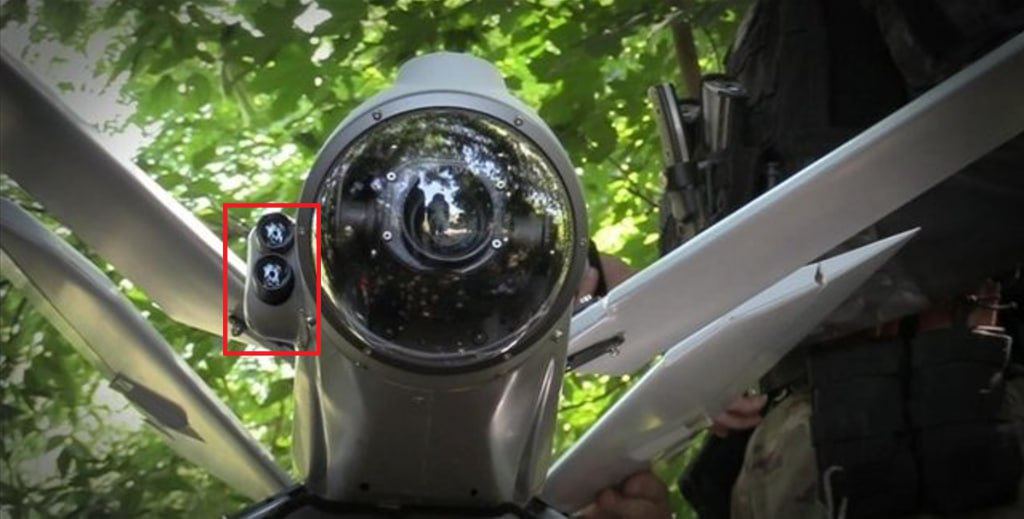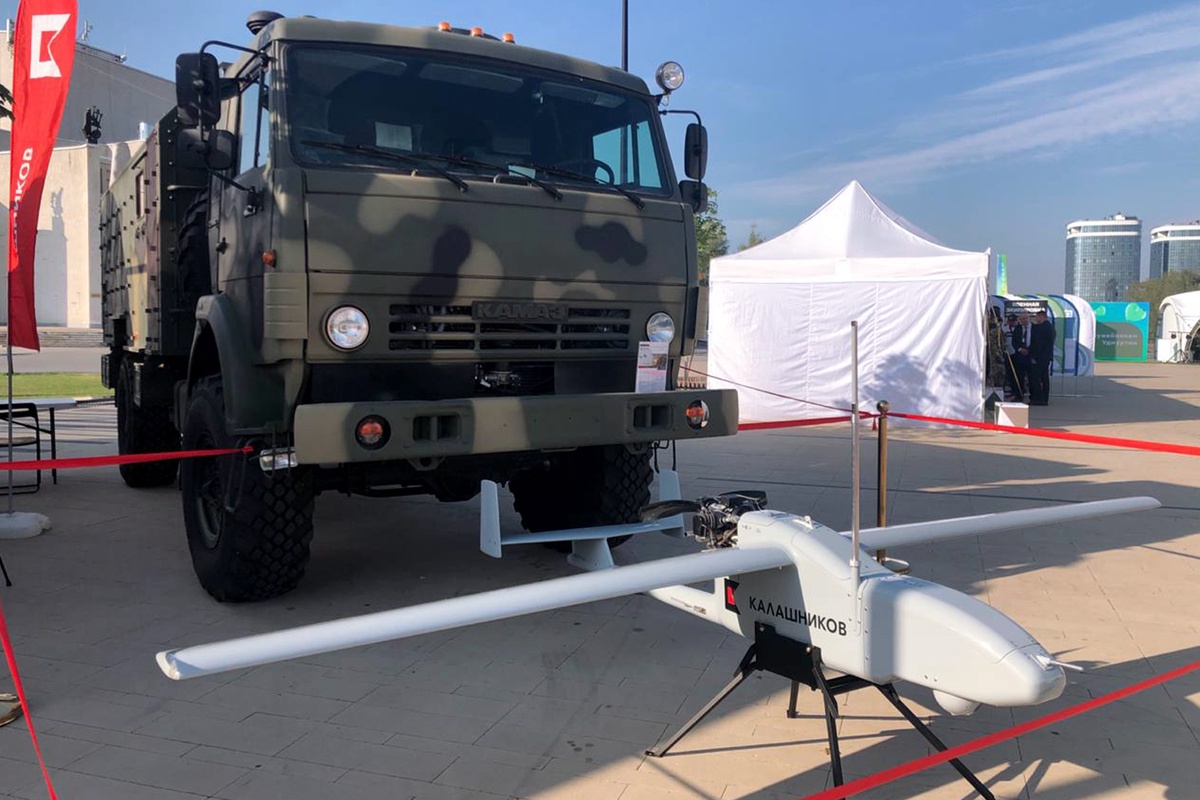On September 18, in a sensational strike that astounded the world, around 100 Ukrainian long-range drones flew 500 km through Russian airspace and struck a large ammunition dump in Toropets, a town in the Tver region of western Russia.
The explosive-laden Ukrainian drones triggered massive secondary blasts of the missiles and bombs stored at the facility, creating a mushroom cloud reminiscent of past tests of nuclear weapons.
The Ukrainian success once again highlights the utility of drones for kinetic strikes in a target-rich environment. If you can strike deep, you can always find undefended targets! No large country has the resources to defend all possible adversary targets.
Ukraine has specialized in using explosive-laden drones, flying slow and low, autonomously or remotely piloted, to strike deep into adversary territory.
Ukraine has repeatedly struck high-value targets such as airbases and electrical power and fuel installations in the past. The strike on the ammunition dump is an important addition to the list of targets struck.
On September 18, in a sensational strike that astounded the world, around 100 Ukrainian long-range drones flew 500 km through Russian airspace and struck a large ammunition dump in Toropets, a town in the Tver region of western Russia.
The explosive-laden Ukrainian drones… pic.twitter.com/jjcHx2vkKM
— EurAsian Times (@THEEURASIATIMES) September 20, 2024
Importantly, the sensational Ukrainian attack on Toropets buried another important strike drone development news that could impact future warfare.

Russian Drone Usage
Like Ukraine, Russia too relies heavily on drones to achieve its Special Military Operation (SMO) goals. Russia’s successes on the battlefront have often pivoted around its introduction of breakthrough drone technology.
The success of the Lancet AI-enabled, target-recognizing, autonomous kamikaze drone gave Russia the breather it desperately needed after the battlefield reverses in the fall of 2022.

The Iranian-origin Geran-2 long-range kamikaze drone gave Russia the airstrike power it needed to defeat highly capable Ukrainian air defenses. Russian Orlan-10 and Supercam drones augmented Russia’s relatively poor space-based ISR capability.
Shot Dead In A Submarine –The Nerve-Wracking Story Of N.Korean Commandos & Their Failed Espionage
Lately, newly introduced into battle, Kronshtadt Orion reconnaissance and strike drones are filling the gap in troop support left by Russian strike helicopters and fighters being forced to move deeper into Russian territory on account of deep strike weapons supplied to Ukraine by NATO.
Granat-4 UAV System
On September 19, the Izhevsk Unmanned Systems Research And Production Associated LLC (IZHBS), which is a part of the Kalashnikov concern, displayed a model of the Granat-4-E portable remote monitoring and relay complex at Izhevsk.
The Granat-4-E system is designed for remote monitoring of the area using photo, video, and thermal imaging equipment at any time of the day. In addition, the drone is capable of retransmitting digital data using onboard equipment in near real-time at a distance of tens of kilometers.

The company stated that the military version – “Granat-4” – had been tested as part of the SMO in Ukraine. Among other targets, the drone also helped destroy an Abrams tank.
The Granat-4 system includes a surveillance UAV, a mobile ground control station mounted on a Kamaz vehicle with a van body, and a relay drone. The surveillance drone is equipped with a gyro-stabilized optical-electronic target designation and surveillance system.
The relay drone extends the operating radius of the surveillance drone, acting as a signal intermediary.
IZHBS says, “The complex was actively used for round-the-clock aerial reconnaissance and high-precision target designation. Thanks to its characteristics, the UAV helped to hit all types of targets: from single combat vehicles of the Armed Forces of Ukraine, including the American-made M1A1 Abrams tank, to enemy strongholds and crossings over water obstacles.”
The destruction of the M1A1 Abrams tank occurred in May. Apparently, the Granat-4 surveillance drone detected the tank and marked it through laser illumination. Russian artillery then hit the tank with a Krasnopol SALH (Semi-Active Laser Homing) precision-guided shell.
This is the first recorded combat use of the complex with the Granat-4 UAV in a new version with illumination for guided ammunition “Krasnopol.”
F-16s “Sitting Ducks” For Russian MiG-31 Fighters? Putin Warns Of Consequences Over Fighting Falcons
Granat Forces Tank Warfare Tactics Rewrite
The use of precision-guided artillery ammunition against a stationary or moving tank marked by a distant UAV is set to further erode tanks’ utility in positional warfare.
So far, tanks have remained relevant in positional warfare through the use of simple steel cages that afford a fair amount of protection against kamikaze drones—lightly armed FPVs or the more lethal autonomous Lancet-like drones. However, there is no stopping a Krasnopol shell!
Also, FPVs and other loitering ammunition are susceptible to communication link jamming. However, there is no option to jam a Krasnopol shell or laser illumination.
Production Bottlenecks
According to Russian media reports, the Granat-4 system may have been developed well before the start of the SMO. However, the Granat, along with other UAVs—Zastava, Eleron, and Outpost—were acknowledged to be heavily dependent on foreign components.
The imperative for import substitution was well understood by Russian drone makers, including Kalashnikov.
In September 2023, IZHBS reportedly relocated to the Novy Dom shopping center in Izhevsk, presumably for serial production of the Granat-4.
Inevitably, IZHBS was subject to sanctions from the UK, USA, Canada, Switzerland, Australia, Japan, New Zealand, and Ukraine.
In October 2023, IZHBS invoked force majeure on its contract with the state for the supply of the drones. However, IZHBS was only struggling with the delivery timeline, not its ability to produce the drone.
Reports appeared in June that IZHBS had resumed mass production of the Granat-4 drone. Kalashnikov’s display of the system at Izhevsk suggests that it is now in serial production and ready for field deployment in numbers for real-time reconnaissance and target designation.
The drone system being fielded now is, in fact, an improved variant of the system developed earlier – It additionally has a laser illuminator for target marking, something it didn’t have earlier.
It’s not clear whether IZHBS has started serial production using import substitution or sanction evasion. It’s likely a combination of both.
Interestingly, Kalashnikov now produces not only the Krasnopol SALH guided artillery ammunition but also the means for guiding it.
Conclusion
Ukrainian long-range attacks deep into Russian territory are gutsy and effective, but they have little impact on the course of the battle on the ground. Russia’s drone technology advances have proven more effective in changing the course of the battle.
- Vijainder K Thakur is a retired IAF Jaguar pilot, author, software architect, entrepreneur, and military analyst.
- VIEWS PERSONAL OF THE AUTHOR
- Follow the author @vkthakur




